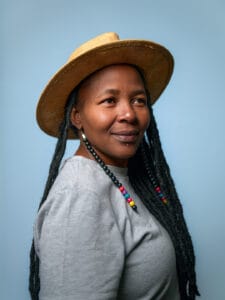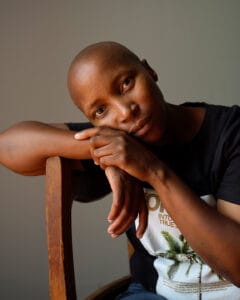The following are tips that can be used as you move toward becoming a better ally to transgender people. Of course, this list is not exhaustive and cannot include all the “right” things to do or say because often there is no one “right” answer to every situation you might encounter.
When you become an ally of transgender people, your actions will help change the culture, making society a better, safer place for transgender people and for all people (trans or not) who do not conform to conventional gender expectations.
You can’t tell if someone is transgender just by looking.
Transgender people don’t look any certain way or come from any one background. Many transgender people do not appear “visibly trans,” meaning they are not perceived to be transgender by others. It is not possible to look around a room and “see” if there are any transgender people. (It would be like a person looking around the room to “see” if there are any gay people.) You should assume that there may be transgender people at any gathering or in any space.
Don’t make assumptions about a transgender person’s sexual orientation.
Gender identity is different than sexual orientation. Sexual orientation is about who we’re attracted to. Gender identity is about our own personal sense of being a man or a woman, or neither of those binary genders. Transgender people can be gay, lesbian, bisexual, straight, or any other sexual orientation.
If you don’t know what pronouns to use, listen first.
If you’re unsure which pronoun a person uses, listen first to the pronouns other people use when referring to them. Someone who knows the person well will probably use the correct pronoun. If you must ask which pronoun the person uses, start with your own. For example, “Hi, I’m Alex and I use the pronouns he and him. What about you?” Then use that person’s pronoun and encourage others to do so. If you accidently use the wrong pronoun, apologize quickly and sincerely, correct your mistake, then move on. The bigger deal you make out of the situation, the more uncomfortable it is for everyone.
Don’t ask a transgender person what their “real name” is.
For some transgender people, being associated with their birth name is a tremendous source of anxiety, or it is simply a part of their life they wish to leave behind. Respect the name a transgender person is currently using. If you happen to know the name someone was given at birth but no longer uses, don’t share it without the person’s explicit permission. Similarly, don’t share photos of someone from before their transition, unless you have their permission.
Understand the differences between “coming out” as lesbian, gay, or bisexual and “coming out” as transgender.
“Coming out” to other people as lesbian, gay, or bisexual is typically seen as revealing a truth that allows other people to know your authentic self. The LGB community places great importance and value on the idea of being “out” in order to be happy and whole. When a transgender person has transitioned and is living their life as their authentic self–that is their truth. The world now sees them as who they truly are. Unfortunately, it can often feel disempowering for a transgender person to disclose to other people that they are transgender. Sometimes when other people learn a person is trans, they no longer see the person as “real.” Some people may choose to publicly discuss their gender history in an effort to raise awareness and make cultural change, but please don’t assume that it’s necessary for a transgender person to disclose that they are transgender in order to feel happy and whole.
Be careful about confidentiality, disclosure, and “outing.”
Some transgender people feel comfortable disclosing their gender history, while others do not. A transgender person’s gender history is personal information and it is up to them to share it with others. Do not casually share this information, speculate, or gossip about a person you know or think is transgender. Not only is this an invasion of privacy, it also can have negative consequences in a world that is very intolerant of gender diversity. Transgender people can lose jobs, housing, friends, or even their lives when other people find out about their gender history.
Respect the terminology a transgender person uses to describe their identity.
Transgender people use many different terms to describe their experiences. Respect the term (transgender, transsexual, nonbinary, genderqueer etc.) a person uses to describe themselves. If a person is not sure which terms best describes their gender, give them the time to figure it out for themselves and don’t tell them which term you think they should use. You wouldn’t like your identity to be defined by others, so please allow others to define themselves.
Be patient with a person who is questioning or exploring their gender identity.
A person who is questioning or exploring their gender identity may take some time to figure out what’s true for them. They might, for example, use a name or pronoun, and then decide at a later time to change the name or pronoun again. Do your best to be respectful and use the name and pronoun requested.
Understand there is no “right” or “wrong” way to transition, and that it is different for every person.
Some transgender people access medical care like hormone replacement therapy and surgeries as part of their transition in order to align their bodies with their gender identity. Some transgender people want their authentic gender identity to be recognized without hormones or surgery. Some transgender people cannot access gender affirming healthcare due to a lack of financial resources or access to trained providers. A transgender person’s gender is not dependent on medical procedures or how they look. Accept that if someone tells you they are transgender, they are.
Don’t ask about a transgender person’s genitals, surgical status, or sex life.
It would be inappropriate to ask a cisgender (non-transgender) person about the appearance or status of their genitals. It is equally inappropriate to ask a transgender person those questions. Don’t ask if a transgender person has had “the surgery” or if they are “pre-op” or “post-op.” If a transgender person wants to talk to you about such matters, they will bring it up. Similarly, it wouldn’t be appropriate to ask a cisgender person about how they have sex, so the same courtesy should be extended to transgender people.
Avoid backhanded compliments and “helpful” tips.
While you may intend to be supportive, comments like the following can be hurtful or even insulting:
“I would have never known you were transgender. You look so pretty.”
“You look just like a real woman.”
“She’s so gorgeous, I would have never guessed she was transgender.”
“He’s so hot. I’d date him even though he’s transgender.”
“You’re so brave.”
“You’d pass so much better if you wore less/more make-up, had a better wig, etc.”
“Have you considered a voice coach?”
Challenge anti-transgender remarks or jokes in public spaces, including LGB spaces.
You may hear anti-transgender comments from anti-LGBTQ activists, but you may also hear them from LGB people. Someone may think that because they’re gay, it’s ok for them to use certain words or tell jokes about transgender people. It’s important to challenge anti-transgender remarks or jokes whenever they’re said and no matter who says them.
Support all-gender public restrooms.
Some transgender, nonbinary, and gender non-conforming people may not feel like they match the signs on the restroom door. Encourage schools, businesses, and agencies to have single user, unisex and/or all-gender restroom options. Make it clear that trans, nonbinary, and gender non-conforming people are welcome to use whichever restroom they feel comfortable using.
Help make your company or group truly trans-inclusive.
“LGBTQ” is now a commonplace term that joins lesbian, gay, bisexual, queer, and transgender people under the same acronym. If you are part of a company or group that says it’s LGBTQ-inclusive, remember that transgender people face unique challenges, and that being LGBTQ-inclusive means truly understanding the needs of the trans community and implementing policies address that them.
At meetings and events, set an inclusive tone.
In a group setting, identify people by articles of clothing instead of using gendered language. For example, the “person in the blue shirt,” instead of the “woman in the front.” Similarly, “Sir” and “Madam” are best avoided. If bathrooms in the space are not already all-gender, ask if it’s possible to put an all-gender sign on them. In some circumstances, where not everyone is known, consider asking people to introduce themselves with their names and pronouns. For example, “Hi, I’m Nick and I use he/him pronouns.” Start with yourself and use a serious tone that will discourage others from dismissing the activity with a joke. However, if you feel this practice will have the effect of singling out the trans people in the room or putting them on the spot, avoid it. Remember, it costs cisgender people nothing to share their prounouns, but for trans people it can mean they are sharing something very personal about their gender.
Listen to transgender people.
The best way to be an ally is to listen with an open mind to transgender people speaking for themselves. Follow thought leaders in the transgender community. Check out books, films, YouTube channels, and trans blogs to find out more about transgender people and the issues people within the community face. We recommend watching the documentary “Disclosure” on Netflix. Directed by Sam Feder and executive produced by Laverne Cox, “Disclosure” surveys the history of trans representation in TV and film using archival footage and interviews with 30 trans advocates and artists working in the entertainment industry. The film reveals how media has created and perpetuated stereotypes about transgender people.
Learn that transgender people are not new.
Transgender people have existed across cultures and throughout history. What is new is the heightened awareness of gender diversity and the transgender community because of increased media attention in recent years. Seek out resources written by transgender people about how trans people existed in the past, and how trans community exists in different countries around the world.
Know your own limits as an ally.
Don’t be afraid to admit when you don’t know something. It is better to admit you don’t know something than to make assumptions or say something that may be incorrect or hurtful. Seek out the appropriate resources that will help you learn more. Remember being an ally is a sustained and persistent pattern of action; not an idle or stable noun.
(Updated March 2021 / Adapted from MIT’s “Action Tips for Allies of Trans People.”)
Learn even more about being an ally
To learn more about how to be an ally to trans person, check out PFLAG’s Straight for Equality site and their “Guide to being a trans ally” publication.
Learn more about transgender people and history
In spite of the tremendous challenges that come with living in a culture that does not treat transgender people equally, transgender people have made and are making significant contributions to society.
For a look at the history of transgender people in America, check out Transgender History by Susan Stryker and the GLAAD Media Award-winning films from Rhys Ernst We’ve Been Around and This is Me. Watch HBO’s The Trans List to find out about some strong transgender advocates.












